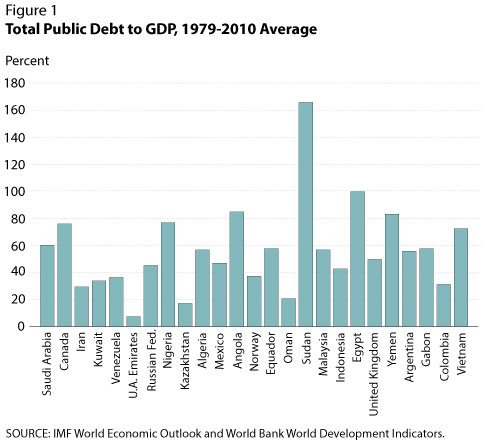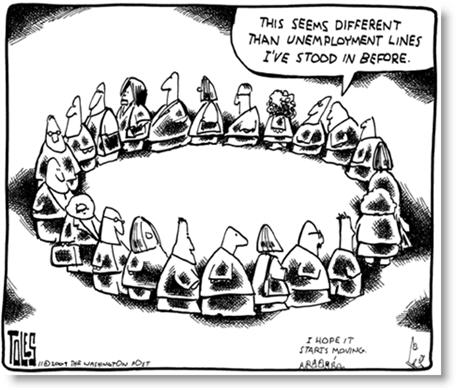+86-(0)768-6925905
Contents:


She wants to scale up production and stock a larger inventory and needs a loan to do it. The bank asks her for a detailed balance sheet so they can calculate the quick ratio of the company. In such cases, it may also be appropriate to calculate the quick ratio by excluding receivables from the numerator to give a more suitable evaluation of the company’s short term liquidity. Cash equivalents are assets that can be quickly converted into cash, such as short-term investments or accounts receivable.
A quick ratio below 1 shows that a company may not be in a position to meet its current obligations because it has insufficient assets to be liquidated. This tells potential investors that the company in question is not generating enough profits to meet its current liabilities. The quick ratio measures a company’s ability to raise cash quickly when needed. For investors and lenders, it’s a useful indicator of a company’s resilience. For business managers, it’s one of a suite of liquidity measures they can use to guide business decisions, often with help from their accounting partner. The current ratio is a liquidity ratio that measures a company’s ability to cover its short-term obligations with its current assets.

Quick ratio is calculated as (Current Assets – Inventory) / Current Liabilities. Its cloud-based system tracks all your financial information and gives you fast access to your current assets and liabilities. You can spend less time running the numbers and more time driving success. The quick ratio does not take into account the collectability of accounts receivables. This means the business has $1.10 in quick assets for every $1 in current liabilities. A company can improve its current ratio by using long-term financing, paying off liabilities, lowering its overhead, long-term funding, and optimal receivables and payables management.
Definition: WHAT Is Quick Ratio / Acid Test Ratio?
These are the company’s “quick” assets, giving the quick ratio its name. Whereas the current ratio includes all current assets and current liabilities, the quick ratio only considers ‘quick assets’. Quick assets are the most easily liquidated assets, meaning that they can be converted into cash within a short period of time. It is defined as the ratio between quickly available or liquid assets and current liabilities.
StockNews.com Initiates Coverage on Coupa Software with a … – Best Stocks
StockNews.com Initiates Coverage on Coupa Software with a ….
Posted: Mon, 03 Apr 2023 09:15:51 GMT [source]
She how to calculate overtime payly writes about personal finance, insurance, banking, real estate, mortgages, credit cards, loans, and more. Closing Stock Can Be Very SeasonalClosing stock or inventory is the amount that a company still has on its hand at the end of a financial period. It may include products getting processed or are produced but not sold. Raw materials, work in progress, and final goods are all included on a broad level. Credit TermsCredit Terms are the payment terms and conditions established by the lending party in exchange for the credit benefit. As no bank overdraft is available, current liabilities will be considered quick liabilities.
Marketable Securities
The quick ratio measures a company’s capacity to pay its current liabilities without needing to sell its inventory or obtain additional financing. Since it indicates the company’s ability to instantly use its near-cash assets to pay down its current liabilities, it is also called the acid test ratio. An “acid test” is a slang term for a quick test designed to produce instant results. Although current ratio and quick ratio both measure a company’s short-term liquidity, they do have several key differences that you should be aware of. Instead, we calculate the quick ratio, which is the ratio of current assets less inventories to current liabilities.
Other factors, such as our own proprietary website rules and whether a product is offered in your area or at your self-selected credit score range can also impact how and where products appear on this site. While we strive to provide a wide range offers, Bankrate does not include information about every financial or credit product or service. Note that while a quick ratio of one is generally good, whether your ratio is good or bad will depend on your industry. Current liabilities represent financial obligations due within a year. Cash flow problems and maintain good relationships with your creditors and suppliers. Payments Everything you need to start accepting payments for your business.
- But unlike the first company, it has enough cash to meet that supplier payment comfortably — despite its lower quick ratio.
- Payments Everything you need to start accepting payments for your business.
- The gap between the current ratio and quick ratio stems from the inventory line item, which comprises a significant portion of the total current assets balance.
- Any stock on the New York Stock Exchange would be considered a marketable security because they can easily be sold to any investor when the market is open.
- Gain in-demand industry knowledge and hands-on practice that will help you stand out from the competition and become a world-class financial analyst.
It helps the investors estimate the company’s ability to clear out its current liabilities at the earliest or meet its obligations for the short term. The quick ratio measures a company’s ability to quickly convert liquid assets into cash to pay for its short-term financial obligations. The quick ratio typically excludes prepaid expenses and inventory from liquid assets.
Marketable securities are traded on an open market with a known price and readily available buyers. Any stock on the New York Stock Exchange would be considered a marketable security because they can easily be sold to any investor when the market is open. The current ratio is the proportion, quotient, or relationship between the amount of a company’s current assets and the amount of its current liabilities. The current ratio is calculated by dividing the amount of current assets by the amount of current liabilities. The quick ratio is also known as the acid test ratio because by eliminating inventory from current assets it provides the acid test of whether the company has sufficient liquid resources to settle its liabilities.
What Happens If the Quick Ratio Indicates a Firm Is Not Liquid?
If a business owns enough quick assets to cover its current liabilities, it means it can pay off its obligations without the need to sell any of its long-term assets. The quick ratio is calculated by dividing a company’s most liquid assets like cash, cash equivalents, marketable securities, and accounts receivables by total current liabilities. The quick ratio is a stricter measure of liquidity than the current ratio because it includes only cash and assets the company can quickly turn into cash.
Too often, https://1investing.in/es facing cash flow problems have to sell inventory at a heavy discount or borrow at very high interest rates to meet immediate obligations. If a business’s quick ratio is less than 1, it means it doesn’t have enough quick assets to meet all its short-term obligations. If it suffers an interruption, it may find it difficult to raise the cash to pay its creditors. The higher the quick ratio, the better a company’s liquidity and financial health, but it important to look at other related measures to assess the whole picture of a company’s financial health. It is otherwise called as Absolute Liquid Ratio or Cash Ratio or Cash Position Ratio.
For example, some manufacturing companies hold large quantities of raw materials for the production of finished goods, which are then warehoused and sold on credit for a lengthy period of time. We follow ethical journalism practices, which includes presenting unbiased information and citing reliable, attributed resources. Much of our research comes from leading organizations in the climate space, such as Project Drawdown and the International Energy Agency . The articles and research support materials available on this site are educational and are not intended to be investment or tax advice.
This is because the formula’s numerator will be higher than the formula’s denominator (the company’s current liabilities). A higher quick ratio signals that a company can be more liquid and generate cash quickly in case of emergency. Because prepaid expenses may not be refundable and inventory may be difficult to quickly convert to cash without severe product discounts, both are excluded from the asset portion of the quick ratio. Specific current assets such as prepaids and inventory are excluded as those may not be as easily convertible to cash or may require substantial discounts to liquidate.
Difference between Current Ratio and Quick Ratio
Conversely, the current ratio factors in all of a company’s assets, not just liquid assets in its calculation. That’s why the quick ratio excludes inventory because they take time to liquidate. The quick ratio evaluates a company’s ability to pay its current obligations using liquid assets. Cash And Cash EquivalentsCash and Cash Equivalents are assets that are short-term and highly liquid investments that can be readily converted into cash and have a low risk of price fluctuation. Cash and paper money, US Treasury bills, undeposited receipts, and Money Market funds are its examples. They are normally found as a line item on the top of the balance sheet asset.

To begin, the Quick Ratio provides no information about the level and timing of cash flows, which are extremely important in determining a company’s ability to pay liabilities when due. There are several reasons, beyond a management analysis, for creating a quick ratio. By analyzing the financial status of a business with the quick ratio, a potential investor can get a quick view of the viability of the business. If the quick ratio is very weak, or low, an investor may not even consider doing further research into the business.
Why is it important for a company to have a high quick ratio?
The quick ratio alone does not give the full picture of a company’s financial health and should be considered alongside other metrics, such as the earnings-per-share or rate-of-return on investments. The quick ratio is a more conservative measure of liquidity than the current ratio. It includes quick assets and other assets that might take months to convert to cash. Current ratio calculations include all the firm’s current assets, while quick ratio calculations only include quick or liquid assets. The ratio is most useful for companies within in manufacturing and retail sectors where inventory can comprise a large part of current assets. It is often used by prospective creditors or lenders to find out whether the company will be able to pay their debts on time.
What Is the Quick Ratio? Definition, Calculation & Example – TheStreet
What Is the Quick Ratio? Definition, Calculation & Example.
Posted: Thu, 19 Jan 2023 08:00:00 GMT [source]
The Quick Ratio measures the short-term liquidity of a company by comparing the value of its cash balance and current assets to its near-term obligations. Current liabilities are a company’s short-term debts due within one year or one operating cycle. Accounts payable is one of the most common current liabilities in a company’s balance sheet. It can also include short-term debt, dividends owed, notes payable, and income taxes outstanding. During hard times, a business’s ability to leverage its cash and other short-term assets can be key to survival.
How to Calculate the Quick Ratio (+Examples) – The Motley Fool
How to Calculate the Quick Ratio (+Examples).
Posted: Fri, 05 Aug 2022 07:00:00 GMT [source]
A low quick ratio, one that is under 1.0, may reflect problems your company is having covering current expenses and maintaining an adequate cash flow. The quick ratio compares current liabilities with current liabilities. The quick ratio is calculated using the formula (Current Assets – Inventory) / Current Liabilities. It does not take into account factors such as long-term debt and depreciation which can also affect a company’s liquidity position. It’s important to compare the quick ratio of a company with its peers. This will give you a better understanding of your liquidity and financial health.
Suppose a company has the following balance sheet financial data in Year 1, which we’ll use as our assumptions for our model. In fact, such a company may be viewed favorably by the equity or debt capital markets and be able to raise capital easily. Lydia Kibet is a freelance writer with a knack for personal finance, investing, and all things money. She’s passionate about explaining complex topics in easy-to-understand language. Her work has appeared in Business Insider, Investopedia, The Motley Fool, and GoBankingRates.
In the same manner, a low quick ratio does not necessarily mean a bad liquidity position as inventories are not absolutely non-liquid. Hence, a firm having a high quick ratio may not have a satisfactory liquidity position if it has slow-paying debtors. On the other hand, a firm having a low quick ratio may have a good liquidity position if it has fast moving inventories. Ideal current and quick ratio numbers attest to its ability to repay loans and settle its debt on time. A quick ratio above one is excellent because it shows an even match between your assets and liabilities. Anything less than one shows that your firm may struggle to meet its financial obligations.
